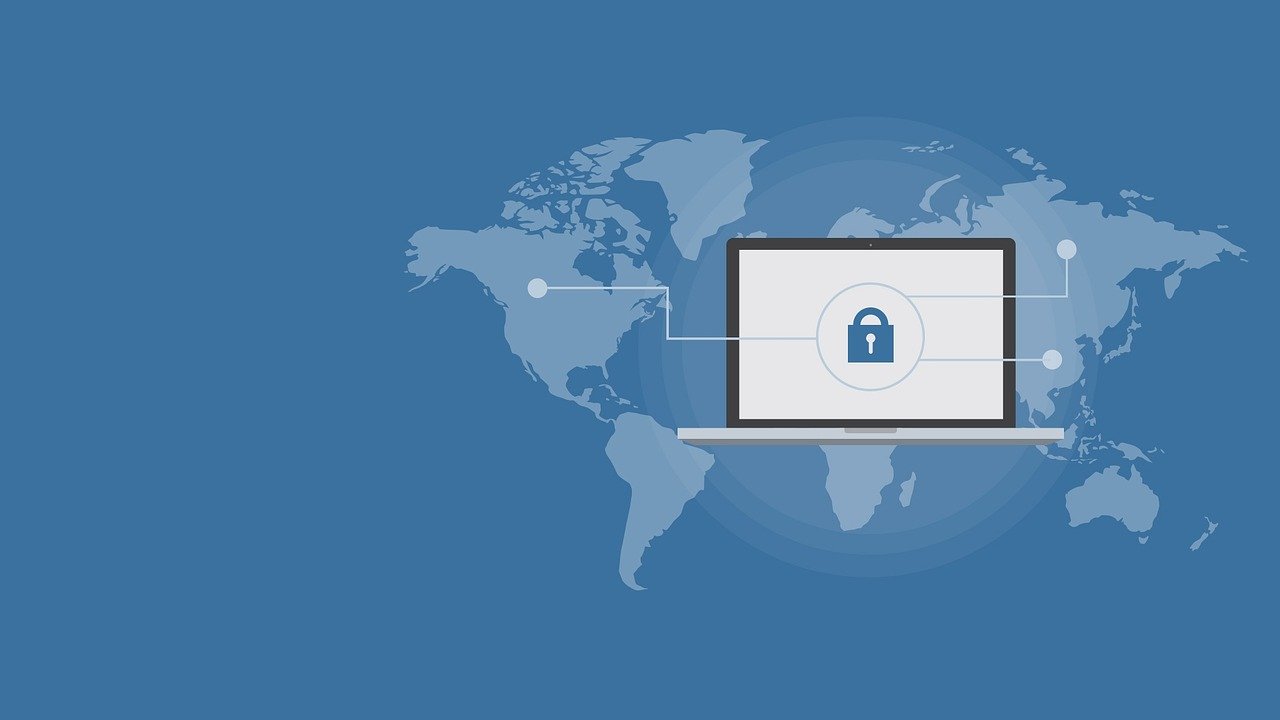Cybercrime, a pervasive and rapidly evolving threat, touches every corner of the digital landscape. From individuals checking their email to multinational corporations managing sensitive data, everyone is a potential target. Understanding the nature of cybercrime, its various forms, and effective preventative measures is crucial in today’s interconnected world. This post will delve into the complexities of cybercrime, offering practical advice and insights to help you protect yourself and your organization.
Understanding Cybercrime
Cybercrime encompasses any criminal activity that involves a computer, a networked device, or a network. This broad definition includes a wide range of offenses, from simple scams to sophisticated attacks targeting critical infrastructure. It’s essential to understand the different types of cybercrime to recognize and respond to potential threats effectively.
Types of Cybercrime
- Hacking: Unauthorized access to a computer system or network with malicious intent. This can involve stealing data, disrupting services, or installing malware.
Example: A hacker breaching a company’s database to steal customer credit card information.
- Malware Attacks: Using malicious software, such as viruses, worms, and Trojan horses, to infect systems and cause damage.
Example: Ransomware encrypting a hospital’s data and demanding payment for its release.
- Phishing: Deceptive attempts to trick individuals into revealing sensitive information, such as passwords or credit card details, through fake emails, websites, or messages.
Example: An email disguised as a legitimate bank notification asking users to update their account information by clicking a link to a fake website.
- Identity Theft: Stealing someone’s personal information, such as their Social Security number or bank account details, to commit fraud.
Example: Using stolen credit card information to make unauthorized purchases.
- Cyberstalking: Using electronic communication to harass or stalk someone, causing them fear or distress.
Example: Sending threatening emails or posting defamatory content about someone online.
- Denial-of-Service (DoS) Attacks: Overwhelming a server or network with traffic to make it unavailable to legitimate users.
Example: A politically motivated attack disrupting a government website.
The Growing Threat of Cybercrime
The frequency and sophistication of cyberattacks are constantly increasing. According to a recent report by Cybersecurity Ventures, global cybercrime costs are projected to reach $10.5 trillion annually by 2025. This underscores the urgent need for individuals and organizations to prioritize cybersecurity. Factors contributing to the growth of cybercrime include:
- Increased reliance on technology: As our lives become more digitized, we create more opportunities for cybercriminals to exploit vulnerabilities.
- Advancements in technology: Cybercriminals are constantly developing new and more sophisticated attack methods.
- Globalization: The interconnected nature of the internet makes it easier for cybercriminals to operate across borders.
- Lack of awareness: Many individuals and organizations lack the knowledge and awareness to protect themselves from cyber threats.
Common Cybercrime Tactics
Cybercriminals employ a variety of tactics to achieve their goals. Understanding these tactics is essential for recognizing and avoiding potential threats.
Social Engineering
Social engineering relies on manipulating human psychology to trick individuals into divulging sensitive information or performing actions that compromise security. It’s a powerful technique because it exploits human trust and vulnerability.
- Pretexting: Creating a false scenario to deceive someone into providing information.
Example: An attacker calling a company’s IT department pretending to be a coworker who needs their password reset urgently.
- Baiting: Offering something tempting, such as a free download or a prize, to lure victims into clicking a malicious link or providing personal information.
Example: An email promising a free vacation in exchange for completing a survey.
- Quid Pro Quo: Offering a service in exchange for information.
Example: An attacker calling individuals claiming to be technical support and offering to fix their computer problems in exchange for remote access.
- Phishing Variations: Spear phishing targets specific individuals, while whaling targets high-profile executives.
Malware Distribution
Malware is often distributed through various channels, including email attachments, malicious websites, and infected software.
- Email Attachments: Opening infected attachments can install malware on your system.
Tip: Be cautious of attachments from unknown senders or attachments with suspicious file extensions (e.g., .exe, .zip).
- Malicious Websites: Visiting compromised websites can lead to drive-by downloads, where malware is installed without your knowledge.
Tip: Ensure your browser is up-to-date and use a reputable antivirus program with real-time scanning.
- Software Vulnerabilities: Exploiting vulnerabilities in software can allow attackers to install malware on your system.
Tip: Regularly update your software and operating system to patch security vulnerabilities.
Exploiting Weak Passwords and Credentials
Weak passwords are a significant security risk, making it easier for cybercriminals to gain unauthorized access to accounts and systems.
- Password Cracking: Using software to guess passwords based on common words, patterns, or personal information.
Tip: Use strong, unique passwords for each account and consider using a password manager to store them securely.
- Credential Stuffing: Using stolen usernames and passwords from previous data breaches to try to log in to other accounts.
Tip: Change your passwords regularly, especially if you have been affected by a data breach.
- Brute-Force Attacks: Attempting to guess passwords by trying every possible combination.
Tip: Enable multi-factor authentication (MFA) to add an extra layer of security to your accounts.
Protecting Yourself and Your Organization
Protecting yourself and your organization from cybercrime requires a multi-layered approach that includes technical safeguards, employee training, and strong security policies.
Implementing Strong Security Practices
- Use Strong Passwords and Multi-Factor Authentication: As mentioned, strong, unique passwords and MFA are essential for protecting your accounts.
- Keep Software Up-to-Date: Regularly update your software and operating systems to patch security vulnerabilities.
- Install Antivirus and Anti-Malware Software: Use reputable antivirus and anti-malware software and keep it up-to-date.
- Use a Firewall: A firewall helps to protect your network from unauthorized access.
- Back Up Your Data Regularly: Back up your data regularly to protect against data loss in the event of a cyberattack.
Consider using the 3-2-1 rule: 3 copies of your data, on 2 different media, with 1 copy offsite.
- Secure Your Wireless Network: Use a strong password and encryption to protect your wireless network.
Enable WPA3 encryption for maximum security.
Employee Training and Awareness
- Conduct Regular Security Awareness Training: Train employees to recognize and avoid phishing attacks, social engineering tactics, and other cyber threats.
Simulate phishing attacks to test employees’ awareness and identify areas for improvement.
- Establish Clear Security Policies and Procedures: Develop and enforce clear security policies and procedures for employees to follow.
- Promote a Culture of Security: Encourage employees to report suspicious activity and to be vigilant about security.
* Create a reporting process that is easy to use and encourages employees to come forward with concerns.
Incident Response Planning
- Develop an Incident Response Plan: Create a plan that outlines the steps to take in the event of a cyberattack.
- Test Your Incident Response Plan Regularly: Conduct regular drills and simulations to test the effectiveness of your incident response plan.
- Have a Designated Incident Response Team: Designate a team of individuals who are responsible for responding to cyber incidents.
- Consider Cyber Insurance: Cyber insurance can help cover the costs associated with a cyberattack, such as data recovery, legal fees, and business interruption losses.
The Future of Cybercrime
Cybercrime is constantly evolving, and new threats are emerging all the time. Staying ahead of the curve requires a proactive approach and a commitment to continuous learning.
Emerging Threats
- AI-Powered Attacks: Artificial intelligence (AI) is being used by cybercriminals to develop more sophisticated and targeted attacks.
- IoT Vulnerabilities: The increasing number of Internet of Things (IoT) devices creates new vulnerabilities that can be exploited by cybercriminals.
- Supply Chain Attacks: Targeting vulnerabilities in the supply chain to compromise multiple organizations.
- Deepfakes: Using AI to create realistic fake videos and audio recordings for malicious purposes, such as spreading misinformation or impersonating individuals.
Staying Ahead of the Curve
- Stay Informed: Keep up-to-date with the latest cyber threats and security trends.
- Invest in Security Technology: Implement the latest security technologies to protect your systems and data.
- Collaborate and Share Information: Share information about cyber threats with other organizations and industry groups.
- Adapt and Evolve: Continuously adapt your security practices to address new and emerging threats.
Conclusion
Cybercrime is a significant and growing threat that requires a proactive and comprehensive approach to security. By understanding the various types of cybercrime, implementing strong security practices, and staying informed about emerging threats, individuals and organizations can significantly reduce their risk of becoming victims. Investing in cybersecurity is an investment in the future, safeguarding your data, reputation, and financial well-being in an increasingly digital world. Prioritizing cyber safety today will contribute to a more secure and resilient tomorrow.



